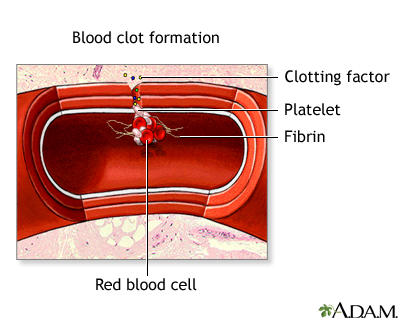Which of the following tube additives promotes clot formation?
Heparin
Oxalate
Citrate
Silica
The Correct Answer is D
Choice A reason:
Heparin is an anticoagulant, not a clot activator. It works by inhibiting thrombin and preventing the conversion of fibrinogen to fibrin, thus preventing clot formation. It is commonly found in green-top tubes and is suitable for collecting plasma samples for tests like electrolyte levels and coagulation studies.
Choice B reason:
Oxalate is also an anticoagulant that prevents clotting by precipitating calcium. It is not used to promote clot formation but rather to maintain a blood sample in a non-coagulated state for various tests.
Choice C reason:
Citrate functions similarly to heparin and oxalate as an anticoagulant. It chelates calcium ions in the blood, inhibiting the coagulation process. Citrate is often used in blue-top tubes and is ideal for collecting plasma samples for coagulation studies.
Choice D reason:
Silica is a clot activator. It is commonly used in serum separator tubes (SSTs) with a gold or red speckled top. The silica particles provide a surface for the rapid formation of the clot, allowing for the separation of serum from the blood cells. This is essential when serum is needed for testing.

Nursing Test Bank
Naxlex Comprehensive Predictor Exams
Related Questions
Correct Answer is B
Explanation
Choice A Reason:
Serology is the division of the laboratory that deals with the study of blood serum. In serology, the focus is on identifying and measuring antibodies in the serum. While serology can be used to support the diagnosis of infections, it does not involve culture and sensitivity testing, which is specific to identifying pathogens and determining their susceptibility to antibiotics.
Choice B Reason:
Microbiology is the correct division for culture and sensitivity tests. This division specializes in studying microorganisms, including bacteria, fungi, parasites, and viruses. When a culture and sensitivity test is ordered, it is the microbiology lab that cultures the sample to grow the organism and then tests various antibiotics to determine which are most effective against it.
Choice C Reason:
Histology is the study of the microscopic structure of tissues. Histology labs prepare and examine tissue samples to diagnose diseases, but they do not perform culture and sensitivity tests, which are specific to microbiology.
Choice D Reason:
Chemistry is a division of the laboratory that performs a wide range of tests to measure chemicals and enzymes in the body. These tests can include blood glucose levels, liver enzymes, and hormone levels, among others. However, chemistry does not handle culture and sensitivity testing, as this is not within the scope of chemical analysis.
Correct Answer is D
Explanation
Choice A reason:
Gastrin is a hormone that stimulates the secretion of gastric acid by the stomach. While it is a critical component in the digestive process, gastrin is not typically sensitive to light, and therefore, does not require protection from light during handling and transportation.
Choice B reason:
Ammonia testing involves measuring the amount of ammonia in the blood, which can indicate liver function and is used in the diagnosis of hepatic encephalopathy. Ammonia levels are not generally affected by light; thus, special precautions to protect from light are not necessary.
Choice C reason:
Pyruvate is a key intermediate in several metabolic pathways throughout the cell. Pyruvate itself is not considered photosensitive, and standard precautions for handling and transportation are sufficient to maintain its integrity.
Choice D reason:
Bilirubin is a breakdown product of red blood cells and is measured to evaluate liver function and to assess jaundice. Bilirubin is known to be photosensitive; exposure to light can cause it to break down, which can affect the accuracy of test results. Therefore, specimens for bilirubin testing must be protected from light during handling and transportation to ensure valid results.
Whether you are a student looking to ace your exams or a practicing nurse seeking to enhance your expertise , our nursing education contents will empower you with the confidence and competence to make a difference in the lives of patients and become a respected leader in the healthcare field.
Visit Naxlex, invest in your future and unlock endless possibilities with our unparalleled nursing education contents today
Report Wrong Answer on the Current Question
Do you disagree with the answer? If yes, what is your expected answer? Explain.
Kindly be descriptive with the issue you are facing.
